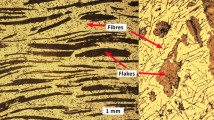Abstract
The age of nuclear power originated with the gas-cooled, graphite-moderated reactor in the 1940s. Although this reactor design had intrinsic safety features and enjoyed initial widespread use, gas-cooled reactor technology was supplanted by higher power density water-cooled systems in the 1960s. However, the next-generation reactors seek enhanced power conversion efficiency and the ability to produce hydrogen, best accomplished with high-temperature gas-cooled systems. Thus, international interest in gas-cooled reactor systems is reemerging. Although the materials systems of these reactors are fairly simple, the reactor environment, particularly its high temperatures and intense irradiation, present extreme challenges in terms of material selection and survivability. This article provides a brief review of materials issues and recent progress related to graphite and ceramic materials for application in gas-cooled nuclear reactor environments. Of particular interest are the drastic, irradiation-induced microstructural evolution and thermophysical property changes occurring as a result of energetic neutron irradiation, which significantly impact the performance and lifetime of much of the reactor core. For “nuclear” graphite, the performance and lifetime not only are closely related to the irradiation environment but also are dramatically affected by the specifics of the particular graphite: manufacturing process, graphitization temperature, composition (amount of coke, filler, etc., depending on where it was mined), and so on. Moreover, the extreme environmental challenges set down by this next generation of fission nuclear plants have driven the development and application of ceramic composites for critical components, pushing beyond upper temperature limits set by metallic alloys used in previous generations of nuclear reactors. The composite material systems of particular interest are continuous carbon-fiber composites and newly developed radiation-resistant silicon carbide fiber composites.
Similar content being viewed by others
References
M.J. Norgett, M.T. Robinson, I.M. Torrens, Nucl. Eng. Des. 33, 50 (1975).
B.S. Hickman, in Studies in Radiation Effects, G.J. Dienes, Ed. (Gordon and Breach, New York, 1966), vol. 1, pp. 72–158.
B.T. Kelly, Carbon 9, 783 (1971).
L.L. Snead, S.J. Zinkle, J.C. Hay, M.C. Osborne, Nucl. Instrum. Methods Phys. Res., Sect. B 141, 123 (1998).
Y. Katoh, H. Kishimoto, A. Kohyama, J. Nucl. Mater. 307–311, 1221 (2002).
L.L. Snead, T. Nozawa, Y. Katoh, T.-S. Byun, S. Kondo, D.A. Petti, J. Nucl. Mater. 371, 329 (2007).
G. Newsome, L.L. Snead, T. Hinoki, Y. Katoh, D. Peters, J. Nucl. Mater. 371, 76 (2007).
J.P. Bonal, B. Thiele, G. Tsotridis, C.H. Wu, J. Nucl. Mater. 212–215, 1218 (1994).
C.H. Wu, J.P. Bonal, B. Thiele, J. Nucl. Mater. 212–215, 1168 (1994).
L.L. Snead, S.J. Zinkle, D.P. White, J. Nucl. Mater. 340, 187 (2005).
J.W.H. Simmons, Radiation Damage in Graphite, International Series of Monographs in Nuclear Energy (Pergamon Press, New York, ed. 1, 1965), p. 242.
R.H. Jones, L.L. Snead, A. Kohyama, P. Fenici, Fusion Eng. Des. 41, 15 (1998).
L.L. Snead, in Carbon Materials for Advanced Technologies, T.D. Burchell, Ed. (Elsevier, Oxford, UK, 1999), pp. 389–427.
T.D. Burchell, W.P. Eatherly, J.M. Robbins, J.P. Strizak, J. Nucl. Mater. 191–194, 295 (1992).
L.L. Snead, D. Steiner, S.J. Zinkle, J. Nucl. Mater. 191–194, 566 (1992).
G.W. Hollenberg, C.H. Henager, G.E. Youngblood, D.J. Trimble, S.A. Simonson, G.A. Mewsome, E. Lewis, J. Nucl. Mat. 219, 70 (1995).
Y. Katoh, L.L. Snead, T. Hinoki, S. Kondo, A. Kohyama, J. Nucl. Mater. 367–370, 758 (2007).
K. Kohyama, S.M. Dong, Y. Katoh, Ceram. Eng. Sci. Proc. 23, 311 (2002).
Y. Katoh, J. Nucl. Mater. 329–333, 587 (2004).
T. Hinoki, A. Kohyama, Y. Katoh, J. Nucl. Mater., manuscript accepted (2008).
M.G. Jenkins, Am. Ceram. Soc. Bull. 85, 16 (2006).
Rights and permissions
About this article
Cite this article
Bonal, JP., Kohyama, A., van der Laan, J. et al. Graphite, Ceramics, and Ceramic Composites for High-Temperature Nuclear Power Systems. MRS Bulletin 34, 28–34 (2009). https://doi.org/10.1557/mrs2009.9
Published:
Issue Date:
DOI: https://doi.org/10.1557/mrs2009.9




